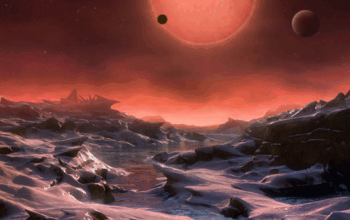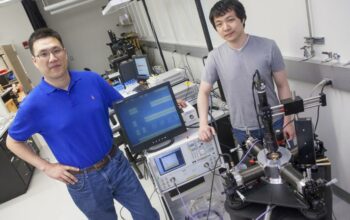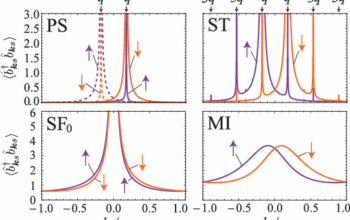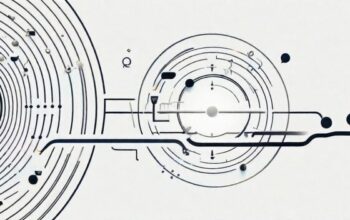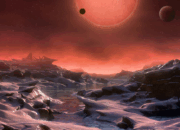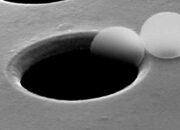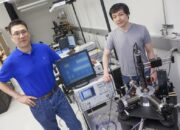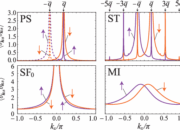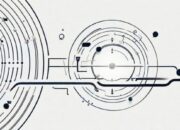The pursuit of understanding the fundamental components of the universe has long been a hallmark of modern physics, particularly in the realms of particle physics and cosmology. Among the intriguing elements that physicists investigate, the Higgs boson stands as a monumental discovery in the quest to unravel the fabric of reality. Recent data emanating from Fermilab has garnered significant attention, eliciting both excitement and speculation within the scientific community. This promising development signals a potential shift in perspective regarding the Higgs boson, and indeed, the standard model of particle physics itself.
To contextualize this discussion, one must first comprehend the significance of the Higgs boson, discovered at the Large Hadron Collider (LHC) in 2012. In fundamental terms, the Higgs boson is not merely another elementary particle; it is a critical linchpin in the mechanism that bestows mass upon elementary particles through the Higgs field. The realization of this elusive particle marked a pivotal moment, confirming theoretical predictions and fortifying the standard model. However, despite its monumental importance, the precise attributes and behaviors of the Higgs boson remain shrouded in mystery, inviting ongoing inquiry.
The recent analysis of data from Fermilab’s Muon g-2 experiment has intensified interest in the properties of the Higgs boson. The Muon g-2 experiment hinges on measuring the anomalous magnetic moment of the muon – an elementary particle akin to an electron but approximately 200 times heavier. Inherent discrepancies between theoretical predictions and experimental results have led to tantalizing questions. Specifically, how does the behavior of muons relate to the broader understanding of particle physics, and what implications might this have for the Higgs boson itself?
Initial findings from Fermilab have indicated anomalies that deviate from the expected values predicted by the standard model. These observations amplify the prospect that the standard model, while robust, may require extensions or modifications to account for these discrepancies. Particularly intriguing is the potential that such deviations could either hint at the existence of unknown particles or new forces that extend beyond the standard model comprehensively.
This juxtaposition of experimental anomalies with theoretical frameworks is reminiscent of historical milestones in physics. Much like the early 20th-century anachronisms that challenged Newtonian physics, the current situation presents an opportunity to reevaluate long-held beliefs regarding particle interactions. Consequently, these emerging facets of Fermilab’s research rekindle curiosity within the field, inviting physicists to probe deeper into the enigma of the Higgs boson and its potential connections to other fundamental forces.
Moreover, the implications of new findings at Fermilab extend beyond mere technical nuances; they challenge the philosophy underpinning our understanding of the universe. The Higgs boson, as a unique manifestation of mass, prompts contemplations about the nature of reality itself. Does the existence of undetected particles suggest a more intricate tapestry of the cosmos? Or does it simply reflect the inadequacies of the current theoretical paradigms? Such inquiries manifest as the core of scientific endeavor, where questions often emerge as vital as the answers gleaned from data.
The excitement surrounding Fermilab’s data is not simply an ephemeral spike in interest, nor is it relegated to the theoretical confines of particle physics. It signifies a cultural and intellectual awakening within the scientific community. As physicists bring forth their hypotheses and engage in discourse, collaborative efforts at laboratories around the globe will play an essential role in refining our understanding of these phenomena. The interconnectedness of scientific inquiry is fundamentally collaborative; advancements at one institution can resonate through the community, promoting a symbiotic growth of knowledge.
Moreover, the current state of research aligns harmoniously with the advancements in technologies such as artificial intelligence and machine learning. The handling of vast datasets has escalated in efficacy, enabling researchers to sift through the complexities of experimental data with unprecedented precision. As these technologies become increasingly integrated into the methodologies of modern physics, the potential for revealing insights about the Higgs boson and its associated anomalies broadens significantly. This convergence of data science and physics represents an exhilarating frontier in both disciplines.
However, it is essential to maintain a measured perspective amidst this excitement. Scientific advancements are often punctuated by periods of skepticism and rigorous scrutiny. The challenges of validating new physics must not be underestimated. The results from Fermilab must undergo extensive peer review and scrutiny within the broader community, as is customary in scientific practice. Only through meticulous verification can these anomalies transition from curiosity to accepted knowledge.
In conclusion, the data from Fermilab has stirred a resurgence of interest in the Higgs boson, igniting a quenchless thirst for knowledge and understanding. As researchers explore the ramifications of the observed discrepancies, a potential paradigm shift beckons on the horizon. The implications of these findings extend beyond the technical; they compel deep philosophic reflections and engagement with the very nature of existence. Each step forward in this intricate dance of discovery not only promises to enhance our comprehension of the universe but also inspires the next generation of scientists dedicated to unraveling the profound mysteries that remain. Indeed, the Higgs boson, once merely a focal point of theoretical physics, has transitioned to an emblem of curiosity, inviting us all to peer deeper into the cosmos.

